June 22
Julian Huxley
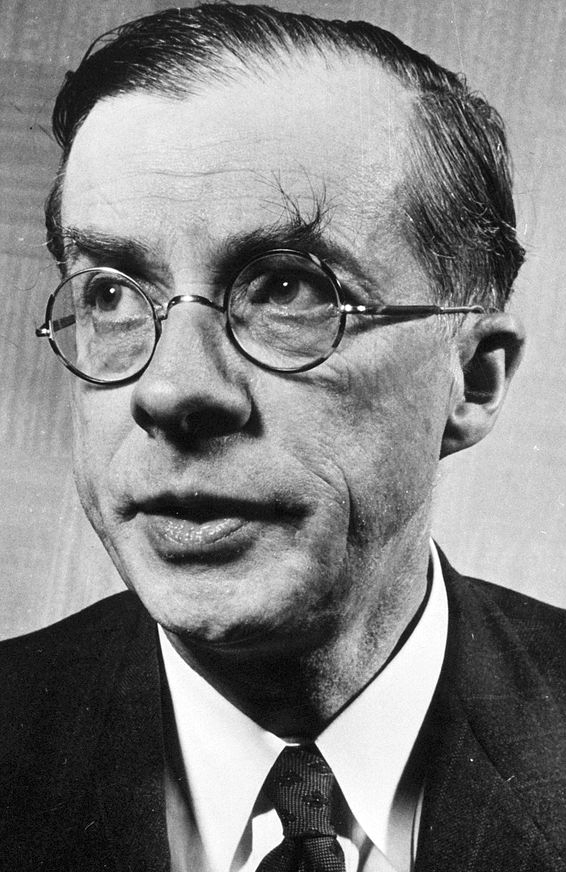
On this date in 1887, Julian Huxley, the brother of novelist Aldous Huxley and the grandson of agnostic biologist Thomas Henry Huxley, was born in Great Britain. Educated as a biologist at Oxford, he taught at Rice Institute, Houston (1912-16), Oxford (1919-25) and Kings College (1925-35). An ant specialist (he wrote a book called Ants in 1930), Huxley was secretary of the Zoological Society of London (1935-42) and UNESCO’s first general director (1946-48). A strong secular humanist, Huxley called himself “not merely agnostic. … I disbelieve in a personal God in any sense in which that phrase is ordinarily used.” (Religion Without Revelation, 1927, revised 1956)
Huxley was an early evolutionary theorist with versatile academic interests. Some of his many other books include Essays of a Biologist (1923), Animal Biology (with J.B.S. Haldane, 1927), The Science of Life (with H.G. Wells, 1931), Thomas Huxley’s Diary of the Voyage of the HMS Rattlesnake (editor, 1935), The Living Thoughts of Darwin (1939), Heredity, East & West (1949), Biological Aspects of Cancer (1957), Towards a New Humanism (1957) and Memories, a two-volume autobiography in the early 1970s. Huxley was knighted in 1958 and was also a founder of the World Wildlife Fund. (D. 1975)
PHOTO: Huxley in 1964. Dutch National Archives, The Hague, Creative Commons.
"Operationally, God is beginning to resemble not a ruler, but the last fading smile of a cosmic Cheshire Cat."
— Julian Huxley, "Religion Without Revelation" (1927)
Bill Blass
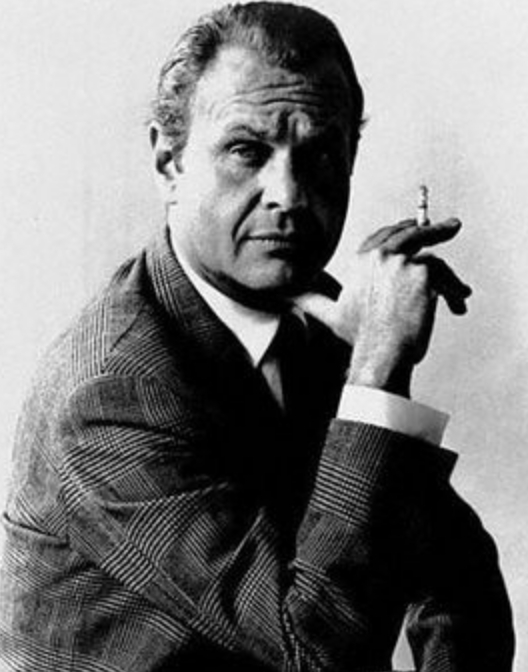
On this date in 1922, fashion designer William Ralph Blass was born in Fort Wayne, Ind. His mother was a dressmaker and his father was a traveling hardware salesman who committed suicide when Blass was 5. Always interested in art, he started selling evening gowns of his own design at age 15 for $25 each to a dress manufacturer in New York. When he was 17 he moved to Manhattan to study fashion. A year later he was the first male to win Mademoiselle’s Design for Living award.
Blass enlisted in the army when he was 20 and was assigned, along with writers, artists, theater people and other creative types, to a special camouflage unit whose mission was to trick the Germans into focusing on false locations to find the Allies. At the end of the war, Blass returned to New York, becoming a protege of Baron de Gunzburg, an influential fashion editor at Vogue and Harper’s Bazaar.
During the 1950s, Blass worked for Anna Miller & Co., designing what was to become his signature style of clothing. In 1959, when Anna and her brother Maurice Rentner merged companies, Blass became head designer, then vice president of Maurice Rentner Inc. In 1970 the name was changed to Bill Blass Ltd.
Blass designed expensive, beautifully cut and tailored clothing, noted for its classic style and creative use of patterns and textures. He was also the first American designer from the high-fashion end of the industry to design for men. He received several Coty Awards, regarded as the Oscars of the industry, and in 1999 received a Lifetime Achievement Award from the Fashion Institute of Technology. Involved in community work throughout his life, he received numerous public service awards and was a trustee of the New York Public Library.
He sold his company in 1999 for $50 million. His memoir Bare Blass was published in 2002, two years after he was diagnosed with oral cancer.
He kept his personal and public lives separate. According to his obituary in The UK Guardian, “His private life stayed remarkably private to the end.” Fashion writer Bernadine Morris wrote in a New York magazine piece (July 8, 2002): “You could never tell he was gay, because although he had good manners, he was not effete, and if he ever had lovers, it wasn’t anything anyone knew about.” (D. 2002)
Bill Blass: I have a firm belief in such things as, you know, the water, the Earth, the trees and sky. And I’m wondering, it is increasingly difficult to find those elements in nature, because it’s nature I believe in rather than some spiritual thing.
SFWeekly: You’re not a religious man?
BB: No. And I do suppose that science has taken, to a large extent and for a number of people, has taken the place of religion.
SFW: What do you mean by that?
BB: That one can have more belief in scientific cures or scientific miracles than you do in God miracles. It’s inevitable that we will eventually diffuse into nothingness.— SF Weekly (Sept. 1, 1999)
Meryl Streep
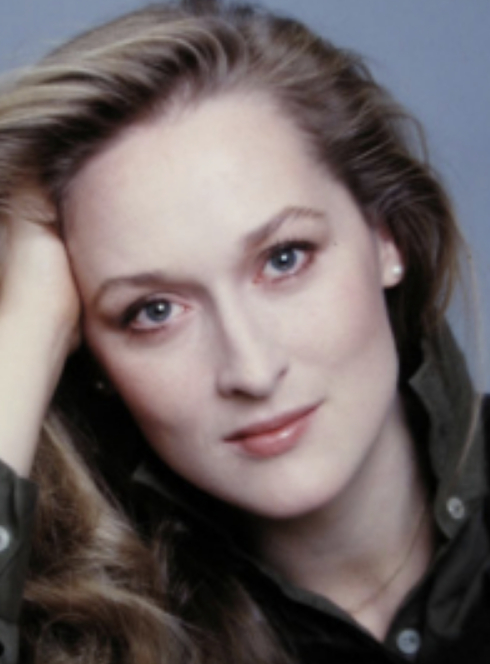
On this date in 1949, Meryl Streep (née Mary Louise Streep) was born in Summit, N.J. Her Presbyterian parents, a commercial artist mother and pharmaceutical executive father, allowed her to attend Catholic Mass because many of her friends were Catholic. Streep dreamed of being an opera singer but gravitated to acting in high school when she received a standing ovation for playing the librarian in “The Music Man” at her school, where she was homecoming queen.
Streep studied drama and English at Vassar, graduating in 1971. She then studied at Dartmouth and Yale, performing in over 30 Yale Repertory Theatre productions (along with Sigourney Weaver) and graduated with a master’s in 1975. She had a small but attention-grabbing role in her first film, “Julia” (1977), which starred Jane Fonda and Vanessa Redgrave. Streep earned her first Oscar nomination for “The Deer Hunter” in 1978.
She holds the record for actress with the most Oscar nominations (21, as of 2019) and has won Best Actress twice (for “Sophie’s Choice” in 1982 and “The Iron Lady” in 2011, playing Margaret Thatcher). She won Best Supporting Actress in 1979 in “Kramer vs. Kramer.” She has won five Best or Best Supporting Actress Golden Globes. A versatile actress, she has played roles in almost every genre, from musical to drama to comedy.
Streep married sculptor Don Gummer in 1978 and they have four children. She identifies as a political liberal and has supported many causes over the years, including the Elton John AIDS Foundation, Americans for the Arts, Equality Now and Stand Up to Cancer.
When her movie “Doubt” (2008) debuted, she faced numerous questions on her religious views. “Doubt is our friend,” she told the London Telegraph. “And once you tip the scales in one direction or another it’s very, very dangerous.” (“Meryl Streep: mother superior,” Dec. 4, 2008.)
PHOTO: Streep in 1979; public domain photo by Jack Mitchell
“I follow no doctrine. I don’t belong to a church or a temple or a synagogue or an ashram.”
— Streep, asked if religion plays a part in her life, The Independent (Jan. 24, 2009)
Erich Maria Remarque
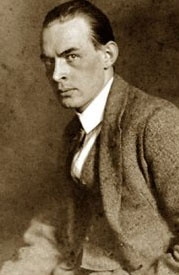
On this date in 1898, German author Erich Maria Remarque was born Erich Paul Remark in Osnabruck, Germany. Remarque is known for writing All Quiet on the Western Front, a novel published in 1928 that chronicled the challenges and reality of the life of a German soldier in World War I. He was drafted when he was 18 and stationed on the Western Front, where he received several shrapnel injuries and spent the rest of the war in a hospital. After the war he trained to become a teacher and held different teaching jobs, quitting one after he clashed with the school’s priest.
Remarque sent a complaint in 1920 to the local education board about the priest that read in part, “He tells me off in the highest tones as if I were a schoolboy. ‘You must go to church more. … You are a bad model for the children. … You do nothing at all in religion.” (Quoted in Tims’ 2004 biography.) He then moved around to a variety of writing jobs, including technical writing and reporting.
All Quiet on the Western Front was an immediate success, and he changed his middle name to honor his mother, Anna Maria, and changed his last name back to its former spelling. Remarque wrote over a dozen other books. In 1933 during the Nazi rise to power his books were banned and burned. The Nazis spread propaganda that he was Jewish and did not fight in WW I. He fled to the U.S. in 1939. His sister, Elfriede Scholz, was beheaded by the Nazis in 1943.
Remarque was married three times. At the time of his death he was married to actress Paulette Goddard, whom he wed in 1958. (D. 1970)
"Any incipient spirit of religion he may have acquired during his schooldays was to be tested and found wanting by his experiences on the western front, evolving instead into a brand of humanism he worked out for himself."
— Excerpt from "Erich Maria Remarque: The Last Romantic" by Hilton Tims (2004)
Ignacio Ramírez
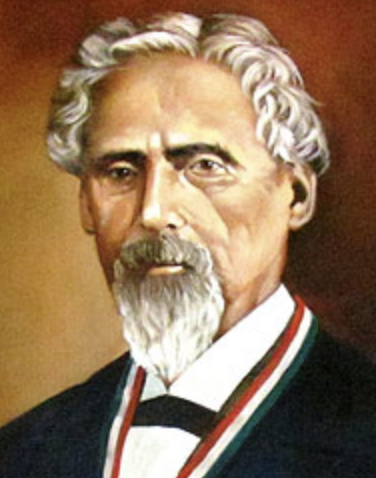
On this date in 1818, poet, lawyer and journalist Juan Ignacio Paulino Ramírez Calzada was born in San Miguel de Allende, Mexico. Known by the pen name “El Nigromante” (The Necromancer), Ramírez co-founded Don Simplicio, a satirical periodical, with politician and journalist Guillermo Prieto. Ramírez, an advocate for educational and economic reforms as well as women’s rights, said that “education is the only possible way to achieve well-being.” (“Ignacio Ramírez,” Jardón.)
He was exiled to California during the reign of Emperor Maximillian. Upon his return to Mexico he was appointed to the Supreme Court. During his time as minister of justice and education, he expanded public education and established secondary education, especially for women and indigenous people.
A lifelong champion of atheism and freethinking, Ramírez caused a scandal when, in a speech to the literary Academy of San Juan de Letrán, he declared God didn’t exist (see quote). Despite the controversy, he was accepted into the academy. Even after his death, his atheism was controversial.
In 1948, artist Diego Rivera painted a mural wherein Ramírez is depicted holding a sign saying “Dios no existe” (God does not exist). Rivera would not remove the inscription so the mural was not shown for nine years until after Rivera agreed to remove the offending words. (D. 1879)
"No hay Dios; los seres de la naturaleza se sostienen por sí mismos." ("There is no God. Natural beings sustain themselves.")
— Ramírez's entry by María Elena Victoria Jardón in "The Encyclopedia of Mexico" (1997)
Dan Brown
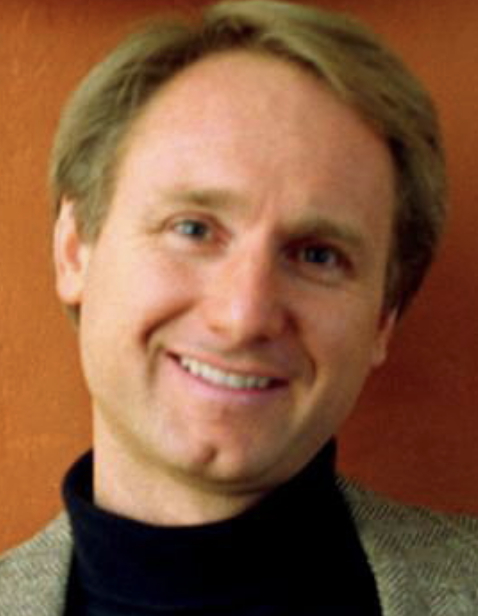
On this date in 1964, novelist Daniel Gerhard Brown was born in Exeter, N.H. His father was a math teacher and his mother was a professional musician primarily involved with religious music. He was raised Episcopalian and has described himself as a very pious child, singing in church and attending church camp. He graduated with a degree in English and Spanish in 1986 from Amherst College and then tried to establish himself as a singer-songwriter and pianist.
In 1993 he secured a job at Beverly Hills Prep School in California, teaching English and creative writing. Brown’s first book, 187 Men to Avoid: A Guide for the Romantically Frustrated Woman (1995) was co-authored with his wife, Blythe Newlon, under the pseudonym Danielle Brown. Newlon and Brown married in 1997.
Brown is best known for his Robert Langdon series, which centers around the adventures of a Harvard symbologist and explores the paradoxical philosophies of science and religion. The first book in the series, Angels & Demons, was published in 2000. It was the second book in the series, The Da Vinci Code, that launched Brown into the spotlight. The book sold 6,000 copies on the first day it was released and skyrocketed to the top of The New York Times’ best-seller list in the first week of publication.
In 2005 he was named one of the 100 Most Influential People in the World by TIME magazine. Film adaptions of The Da Vinci Code and Angels & Demons were made starring Tom Hanks. The series’ fifth book, Origin, (2017) focuses on aheism, religious extremism, scientific advancement and creationism. In the book he makes a reference to FFRF:
“[A]cross the Western world, anti-religious organizations were sprouting up, pushing back against what they considered the dangers of religious dogma — American Atheists, the Freedom from Religion Foundation, Americanhumanist.org, the Atheist Alliance International.
“Langdon had never given these groups much thought until Edmond had told him about the Brights — a global organization that, despite its often misunderstood name, endorsed a naturalistic worldview with no supernatural or mystical elements. The Brights’ membership included powerhouse intellectuals like Richard Dawkins, Margaret Downey and Daniel Dennett. Apparently, the growing army of atheists was now packing some very big guns.”
In an interview with NPR (Oct. 22, 2017) after the release of Origin, Brown told the host that his book made it clear that he doesn’t “have a soft spot in his heart for creationism.” Although Brown has said that he doesn’t quite consider himself an atheist, he’s moving toward a “more agnostic” viewpoint.
"In eighth or ninth grade, I studied astronomy, cosmology, and the origins of the universe. I remember saying to a minister, 'I don't get it. I read a book that said there was an explosion known as the Big Bang, but here it says God created heaven and Earth and the animals in seven days. Which is right?' Unfortunately, the response I got was, 'Nice boys don't ask that question.' A light went off, and I said, 'The Bible doesn't make sense. Science makes much more sense to me.' And I just gravitated away from religion."
— Brown, "Life After 'The Da Vinci Code,' " Parade magazine (Sept. 13, 2009)
Octavia Butler
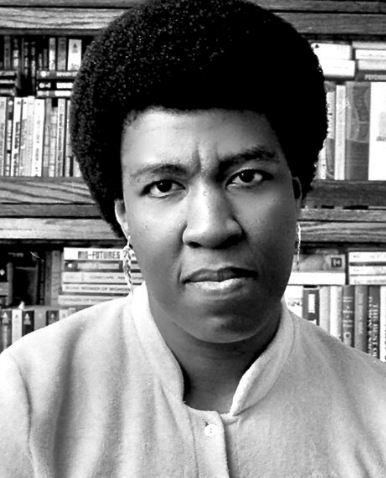
On this date in 1947, science fiction writer Octavia Estelle “Junie” Butler was born in Pasadena, Calif., the only child of Octavia Guy, a housemaid, and Laurice Butler, who shined shoes for a living. Her father died when she was 7 and she was raised by her mother and maternal grandmother.
She graduated from Pasadena City College (1968), then attended California State University and the University of California-Los Angeles. She was encouraged by Harlan Ellison to write. The back of a notebook kept by the young Octavia features a page of confident resolutions, vowing “I shall be a bestselling writer. … My books will be read by millions of people! I will buy a beautiful home in an excellent neighborhood. I will help poor black youngsters broaden their horizons.” (octaviabutler.com)
She struggled, rising daily at 2 a.m. to write before various jobs as dishwasher, telemarketer, even potato chip inspector. But she made good on her vow. Her debut novel Patternmaster (1976) was the first in a five-part series about a group of telepaths ruled by an immortal African. Amazon Studios and JuVee Productions in 2021 started developing a series based on the books, beginning with Wild Seed.
She started writing science fiction after realizing the paucity of Black characters in the genre. Her dystopian writings include themes on Black injustice, climate change and women’s rights. She told the Los Angeles Times in 1998, “I’m black, I’m solitary, I’ve always been an outsider.” (New York Times obituary, March 1, 2006)
In Kindred (1979), a woman travels back in time to an antebellum plantation to save a white, slaveholding ancestor and thus, her own life. Her other books include Parable of the Sower (1993), Parable of the Talents (1998) and Dawn (1987), which was developed for TV by director Ava DuVernay. Dawn is part of Butler’s Xenognesis trilogy. She was working at the time of her death on another sequel, The Parable of the Trickster. The Parable novels, centering on the founding of a new religion called Earthseed, predicted the rise of the Religious Right.
Butler drew on New Testament stories for the Parable books but fell away from religious belief in her teen years, said Natalie Russell, assistant curator at the Huntington Library in Pasadena, where Butler’s materials are archived. “Butler talks about in interviews and other places that she had a very strict Baptist upbringing and that it informed her whole life,” Russell said. “It certainly informed her work and not just in a sense of morality. Its ideas and tropes and were something she drew on for her characters and plots.” (Religion Unplugged online magazine, Nov. 13, 2020)
Butler received two Hugo Awards. She became in 1995 the first science fiction writer to be awarded a MacArthur Foundation fellowship. She received a PEN Award for Lifetime Achievement in 2000 and reached the New York Times best-seller list 14 years after her death.
Her heroines include a 15-year-old in the short story “The Evening and the Morning and the Night,” who rejects belief in a god after her parents die of an incurable disease she has inherited. Butler never married, calling herself “comfortably asocial” and a hermit. With a large frame and standing 6 feet tall, she had health problems, including high blood pressure, and died at age 58 after a fall, perhaps from a stroke, outside her home in Lake Forest Park, Washington. (D. 2006)
“At the moment, there are no true aliens in our lives. No Martians or Tau Cetians, to swoop down in advanced space ships, their attentions firmly fixed on the all-important to us, no god or devils, no spirits, angels, or gnomes. Some of us know this. Deep within ourselves we know it. We're on our own, the focus of no interest except our consuming interest in ourselves.”
— from Butler's 1995 essay "The Monophobic Response" (included in "Dark Matter: A Century of Speculative Fiction from the African Diaspora" ed. Sheree R. Thomas (2000)
